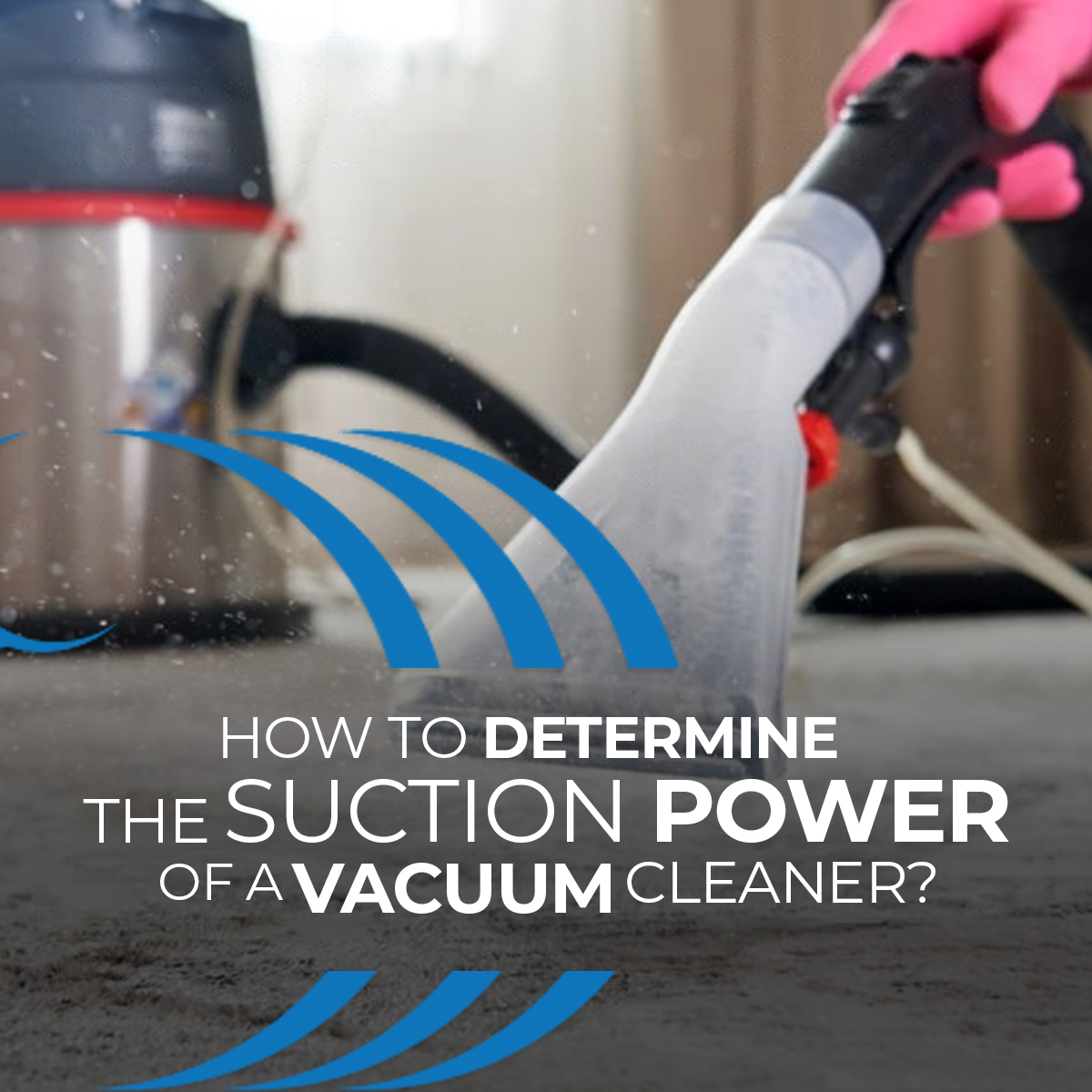
Boosting Productivity in Office Buildings with Central Vacuum
In today’s fast-paced work environment, maintaining a clean and organized office space is crucial for productivity. Office buildings often struggle with keeping their premises clean

Suction strength is a key factor in how effectively a vacuum cleaner works.
If you have carpets at home, a vacuum cleaner with strong suction and a roller brush will remove dirt, pet dander, and other particles that are deeply ingrained in the carpet fibers, keeping allergens out of your home and purifying your indoor air.
But how do you determine the suction power of a vacuum cleaner to make sure that you’re buying the right one?
Although some people will claim that a vacuum cleaner’s motor power determines how well it suctions, the wattage is merely a measurement of how much electricity will be used. It won’t .
Vacuum cleaner suction power is best measured by its Air Watts, which is a calculation of its Cubic Feet per Minute (CFM) and Water Lift.
Here are explanations of CFM, Water Lift, and Air Watts, as well as how to use the Air Watts formula to determine the suction power of a vacuum cleaner.
The Airflow of a vacuum cleaner from surfaces to bags or canisters per minute is measured in Cubic Feet Per Minute.
It is measured by how much air is sucked in through a circular hole that can be anywhere between two inches and closed. A two-inch opening has the highest CFM, whereas there is no CFM for a closed opening. This shows that as the air opening size increases, more CFM is needed.
The airflow or CFM is a good quality that you should look for in a vacuum cleaner, because it evaluates both the strength of the vacuum motor that produces suction and the resistance of the bag and filter where the air passes through.
If you want to measure the CFM of your vacuum cleaner, you must first disconnect your vacuum cleaner’s wands and suction hose in order to measure its CFM accurately. Actual airflow can be affected by a number of factors, including hose and wand turbulence, airflow constraints caused by the cleaning tool’s contact with a floor or other surface, filter loading and increased resistance brought on by a clogged bag.
A vacuum cleaner has better suction when it has more airflow. High CFM is therefore necessary for thorough carpet cleaning.
Even though most vacuum cleaners are not designed to pick up water, the Water Lift test is used by vacuum cleaner manufacturers to evaluate the suction power of their products. They seal everything up and immerse the vacuum wand in a 1-inch cylinder of water to find out how many inches up the cylinder can the suction motor pull up or lift water.
There should be no air flowing through the motor during the Water Lift test. To determine the motor’s pure suction force, a sealed suction measurement is used. Factors like the voltage the motor is getting, barometric pressure, air temperature and altitude can affect or alter the actual measurement of Water Lift.
Water Lift is important because it provides a vacuum cleaner with the ability to pick up or “lift” material from the floor surface. Sand and other heavy debris will be easier to remove from carpet and flooring with vacuum cleaners that have more water lift.
The Water Lift of a vacuum cleaner is also an indicator of how well it can handle internal resistance. This is particularly crucial for HEPA or high filtration vacuum cleaners, which have greater resistance since the air must travel through more filters.
A vacuum cleaner with a high Water Lift rating will also continue to function well as its dust bag gradually fills with dust and debris. A filled bag is known for reducing vacuum suction, causing the vacuum to become resistant to air flow.
Water Lift keeps the air flowing in a vacuum cleaner and it is most important for vacuum cleaners that have long pipes or hoses, or when the vacuum accessory has a narrow opening.
Effective vacuuming, however, requires more than just measuring Water Lift. A vacuum may have incredible Water Lift, but without a powerful motor that can draw in a lot of air and spin at a high speed, very little dirt and debris will move toward the vacuum filter. Therefore, both CFM and Water Lift are needed to create an effective vacuum cleaner.
Air Watts, which combines the measurements of Water Lift and CFM, has been considered as the standard unit of measurement for suction power in the vacuum industry. It is the amount of watts that a vacuum uses to push air through the nozzle of a vacuum cleaner.
According to the American Society of Testing and Materials (ASTM), Air Watts is the most accurate metric for determining how well a vacuum system actually cleans.
Suction power cannot be determined just by the two measurements of CFM and water lift since a vacuum acts between these two opposing variables. A vacuum cleaner does not just operate at a sealed suction alone, nor a two-inch vacuum opening. It works through both.
When going through a list of vacuum cleaner specifications, keep in mind that the CFM and Water Lift measurements of a vacuum cleaner are at their maximum values. These values were not measured simultaneously, so they can change or lessen when the vacuum is functioning. Be aware of the curve that is produced by the CFM and Water Lift as the opening increases from zero to two inches. The Air Watts will reach its maximum point and can be computed somewhere along this curve.
To calculate the Air Watts using CFM and Water Lift, you can use this simple formula:
P = 1/8.5 x F x S
P = 1/8.5 x F x S

In today’s fast-paced work environment, maintaining a clean and organized office space is crucial for productivity. Office buildings often struggle with keeping their premises clean

Central vacuums in animal shelters & vet clinic: Explore how these systems boost hygiene, efficiency, and air quality.

In the world of home entertainment, a home theater is a luxury that many homeowners dream of. It’s an immersive experience that brings the magic

A central vacuum system is a significant investment that promises convenience, powerful suction, and improved indoor air quality. However, choosing the right central vacuum hose
Our home automation products are at the forefront of technology, offering a blend of convenience, security, and efficiency. As a Homewave dealer, you’ll be part of a network transforming homes into smart, futuristic spaces.
Embark on this rewarding journey with us and leverage the power of innovative technology.
Please fill out this form and become a Homewave Dealer.